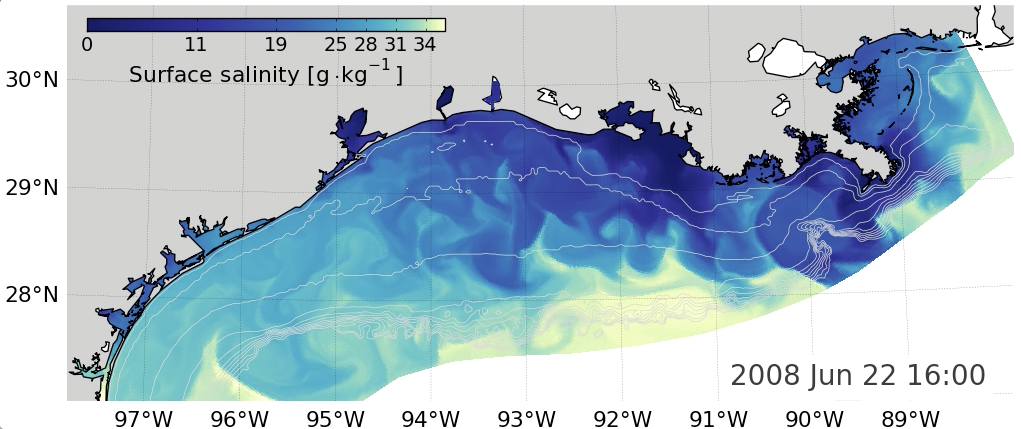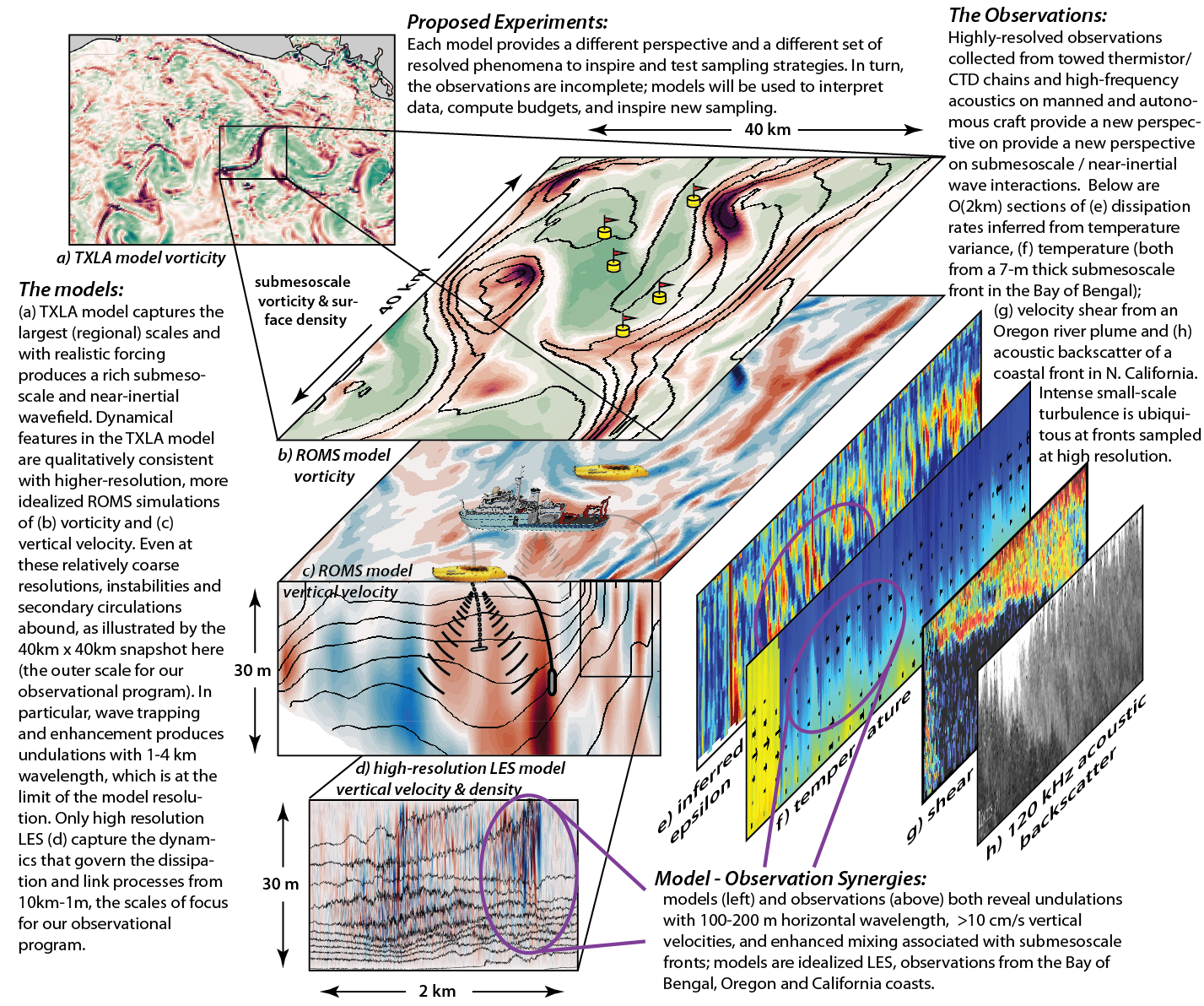SUNRISE NSF-NERC
Project overview
Near-inertial motions (oscillations near the Coriolis frequency) and submesoscales (1-10km) are ubiquitous and important features of the upper ocean. Recent work has shown that near-inertial motions (NIOs) can directly interact with submesoscales and upper ocean turbulence, but these interactions are poorly understood. This project seeks to create a unified dynamical description of near-inertial and submesoscale motions and their influence on turbulent mixing.
Location
The northern Gulf of Mexico is an ideal place to observe the interaction between NIOs, submesoscales, and turbulence. Here (and near other freshwater sources), large lateral density gradients provide a persistent source of energy for submesoscale motions while providing the capacity for changes in vertical stratification through vertically-sheared currents. During summer in the northern Gulf of Mexico, storms are infrequent and winds are generally mild with a notable land-sea breeze that is nearly resonant with the local inertial period. Because of this, near-inertial currents are quite strong on the shelf, with observed amplitudes over 0.5 m s-1. Thus, the Mississippi/Atchafalaya river plume is an ideal location to study the interaction between near-inertial motions and submesoscale features in a new regime with stronger stratification and more energetic near-inertial motions than typical for the surface ocean mixed layer. Strong eddy activity is clearly seen in numerical simulations of shelf circulation:

Observational plan

